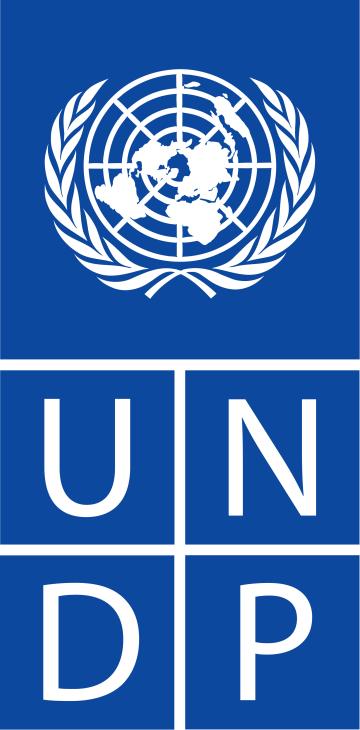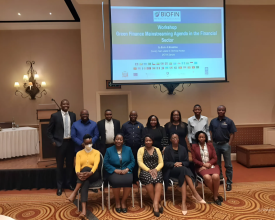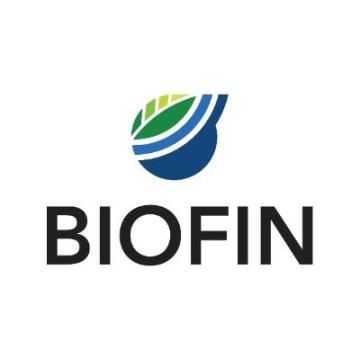
Green Bonds in Zambia: Developing a Market to Mobilize Resources for Projects with Climate and Biodiversity Benefits

Charcoal is a significant source of household energy in many parts of Zambia and heavily contributes to deforestation. To advance the energy transition and conserve biodiversity, Zambia has developed its green bond market with support from the Biodiversity Finance Initiative (BIOFIN) of the United Nations Development Programme (UNDP).
Green bonds are fixed-income instruments, like other bonds, with the key difference that their proceeds must be exclusively used to finance sustainability projects.
In 2023, Copperbelt Energy Corporation (CEC) Renewables issued the first-ever green bond in Zambia. With two tranches issued so far, totalling USD 150 million, green bonds have helped CEC finance the development of two solar plants with a combined capacity of 196 megawatts (MW). By increasing renewable energy supply to the national grid, these projects help reduce demand for charcoal and support the achievement of Zambia’s National Biodiversity Strategy and Action Plan (NBSAP) target of reducing deforestation by at least 25%.
Context
Challenges addressed
Energy production in Zambia is highly reliant on nature. Wood fuel such as charcoal is the main source of household energy, especially in rural areas. This has been a major driver of deforestation, estimated at 250,000-300,000 hectares per year, according to Zambia’s NBSAP II. Deforestation, in turn, threatens local fauna and flora, and communities whose livelihoods depend on natural resource use.
In addition, 80% of Zambia’s electricity is generated from hydropower. Dependence on this source has been challenging as the country faces more frequent climate-induced droughts. This scenario calls for initiatives that can, simultaneously, address climate and biodiversity concerns.
Biodiversity finance in Zambia remains significantly insufficient. In this regard, green bonds are an innovative financing instrument that can support Zambia to close this funding gap. There is hence an opportunity to further develop this market, leveraging its power to unlock more financing for nature.
Location
Process
Summary of the process
The establishment of an effective regulatory framework for a green bond market in Zambia would not have been possible without the joint efforts of financial regulators, government agencies, and other key stakeholders. Their collaboration through (among other avenues) the Working Group has been crucial in ensuring market progress and providing a platform for this work. However, willingness to collaborate alone was not enough; updated expertise was also necessary for both developing the market and issuing creditworthy bonds. Capacity building and technical support have therefore been essential for (1) developing the regulatory framework and (2) moving the market from legislation to actual operation, with green bonds being issued.
For this to succeed, issuers and investors must perceive advantages in this market compared to others. This is where incentives play a crucial role, attracting participants and further fostering market activity. The Working Group has also been critical in this regard, strongly advocating for these incentives within the government of Zambia and its regulatory agencies.
Building Blocks
Creating the legal and regulatory enabling environment for green bonds in Zambia
The development of legislation and regulations was the foundation for establishing a green bond market in Zambia. The 2019 Green Bonds Guidelines are the main outcome of this process and serve as the enabling regulatory framework for green bonds issuances in the country. They were officially gazetted and developed in line with the International Capital Market Association’s (ICMA) Green Bond Principles, a voluntary protocol for the issuance of green bonds.
The Guidelines comprehensively cover the requirements for issuing green bonds, including the engagement of an independent external reviewer and the submission of a detailed, green bond framework to the Securities and Exchange Commission (SEC). This framework must explain the project selection criteria to be used, how funds will be utilized, the management of proceeds (the funds raised from selling the bonds), and how environmental objectives will be achieved. Together, these elements promote transparency, accountability, and investor confidence.
To complement the Guideline, the Green Bonds Listing Rules were also developed, providing a detailed pathway for issuers to list green bonds on the Lusaka Securities Exchange (LuSE). They also establish procedures for evaluating the environmental credentials of green bonds and reporting impacts, contributing to an orderly market.
Enabling factors
The mobilization and coordinated efforts of all relevant stakeholders in capital markets and regulatory bodies, such as the SEC and the LuSE, are essential for the development and approval of the guideline and associated rules.
Lesson learned
Developing green bonds based on clear legislation and regulations, transparent and accountable mechanisms, and adherence to international standards is crucial to building investor confidence and, consequently, ensuring the bond’s success in mobilizing resources for climate and biodiversity projects. This is particularly important for countries where lower credit ratings could affect the bond’s perceived creditworthiness.
In addition, developing a green bond market is a time-consuming process that requires engagement from multiple stakeholders and ongoing consultations. Therefore, it is essential to manage stakeholders’ expectations and allocate sufficient time to each stage.
Finally, although the effective issuance of green bonds must include independent reviewers, it was identified that this expertise did not exist locally. At the same time, contracting foreign reviewers is costly and time-consuming. Hence, it is important that initiatives for the development of green bond markets also include professional development initiatives to train domestic independent reviewers.
Bringing key stakeholders together under the Green Finance Mainstreaming Working Group
The development of a green bonds market in Zambia is anchored in the activities of the Green Finance Mainstream Working Group, which brings together financial regulators, standard-setting bodies, development partners, and other key institutions with the objective of mainstreaming green finance into Zambia’s financial landscape. Members include the Bank of Zambia, the SEC, and the Pensions and Insurance Authority (PIA). In addition, the Working Group includes strategic participation from the Ministry of Green Economy and Environment, the Ministry of Finance and National Planning, the Zambian Institute of Chartered Accountants, and the Worldwide Fund for Nature (WWF) Zambia.
The establishment of the Working Group provided a regular platform for collaboration among regulatory bodies, government agencies, and experts, fostering an enabling environment for the development and effective implementation of green finance solutions. Many of these solutions are multidisciplinary in nature, from legal requirements to technical expertise, and potentially could not have been developed without this collaborative effort.
Enabling factors
Enabling factors include stakeholders’ willingness to participate in and dedicate time to the Working Group, their recognition of the interconnectedness of green finance and the importance of the topic, and the availability of funding to support the Group’s ongoing activities.
Lesson learned
A key lesson learned is that establishing governance and collaborative structures is crucial for the development of green bond markets and other financial solutions. Regardless of the level of implementation, national or subnational, these solutions are typically multidisciplinary, and their implementation runs more smoothly not only when there is collaboration, but also when a dedicated platform with clear procedures for ongoing engagement is in place.
In addition, it is crucial to consider broader advancements in the financial system that, while not mandatory for issuing green bonds, are likely to strengthen their creditworthiness. In Zambia, the Working Group is also pursuing complementary solutions that support the development of the green bond market, including measures to enhance economic stability, credit ratings, and market infrastructure. Examples include the development of Zambia’s National Green Finance Strategy and Implementation Plan, as well as a green finance taxonomy, tagging, and reporting system.
Capacity building and technical support for market developers and green bonds issuers
Since 2018, UNDP BIOFIN has organized various capacity building workshops and provided support towards the development of the green bonds market in Zambia, engaging with key financial sector regulators. These activities have been instrumental in the formulation of the Green Bonds Guidelines and Listing Rules, and have also included targeted trainings for the SEC on the review and approval of green bond applications.
As an example, a series of capacity-building sessions to scale up the market for green bond issuances in Zambia was delivered to members of the Working Group and other key stakeholders (e.g., investment brokers, transaction advisors, institutional investors, etc) in July 2025. The sessions covered topics such as the fundamentals of green bonds, the structuring process, and eligibility requirements.
BIOFIN has also provided technical assistance to high-potential green bonds issuers in Zambia. In 2024, a global call was launched to offer tailored guidance for five companies or other prospective issuers. This support includes drafting green bond frameworks, identifying eligible project pipelines, liaising with investment banks, and engaging second-party opinion providers for certification. It also provides advisory services on aligning bonds with international standards, impact reporting, and market positioning.
Enabling factors
Enabling factors include the availability of experts to deliver workshops and provide ongoing assistance, adequate funding to cover activities and logistics, the willingness of government and regulators to develop a green bond market, and the active participation of financial regulators.
Lesson learned
During the capacity building and technical support activities, it was observed that financial agents often misunderstood the principles of project finance, which differs from more typical corporate finance transactions in its composition of guarantees and risk scenarios. The benefits of green bonds, compared to conventional government bonds, were also not immediately clear to all participants. This highlights the importance of ensuring that capacity-building efforts (1) explain in detail the distinct characteristics of project finance, (2) are complemented by a broad awareness-raising campaign, and (3) also focus on transferring knowledge on environmental sustainability and associated standards to meet investors’ expectations.
Creating the necessary incentives to foster the success of green bonds
Following the development of the legislative and regulatory framework for issuing green bonds, it was also necessary to create incentives that enhance their attractiveness for both issuers and investors. With BIOFIN’s advocacy and in close collaboration with the Working Group, two key incentives were established.
First, investors benefit from a 15% exemption in withholding tax on green bonds listed on a Zambian exchange with a maturity of at least three years. This measure encourages investment in projects with positive environmental outcomes and accelerates resource mobilization. It also motivates potential issuers, who can expect stronger investor demand and, consequently, higher returns on their bonds.
Second, the SEC introduced a 50% reduction in green bond registration fees in Zambia. By lowering issuance costs, this measure further strengthens the attractiveness of the market for issuers.
Enabling factors
A key enabling factor is the support of government and regulators for developing a green bond market and their willingness to design and approve such incentives.
Lesson learned
Recently developed green bond markets might be perceived as too risky by investors who are more familiar with traditional bonds and other investments. Creating incentives for both issuers and local investors is crucial to navigate their risk tolerance and to stimulate the market in its early stages.
Impacts
The development of the green bond market in Zambia has led to the successful issuance of the country’s first-ever green bond. In December 2023, CEC Renewables registered a USD 200 million bond and launched the first tranche of USD 53.5 million. It was oversubscribed by 178%, highlighting strong investor demand, likely driven by the incentives implemented. The bond has a maturity of 18 years (with a three-year moratorium) and an annual fixed interest rate of 9%, paid semi-annually.
The first tranche financed a 60 MW solar plant in Zambia, reducing the country’s reliance on charcoal and consequently diminishing the drivers of deforestation. Therefore, it positively contributes to both climate and biodiversity, in addition to directly supporting Zambia’s NBSAP target of reducing deforestation by at least 25%, partly through the expansion of renewable energy.
In December 2024, CEC issued its second tranche, valued at USD 96.7 million. It is financing the development of a 136 MW solar plant, bringing CEC’s total solar capacity to 236 MW. This demonstrates continued demand for green bonds and investor confidence in the market.
Beyond environmental benefits, the green bond market generates positive economic outcomes by attracting investment to the country and supporting broader market development.
Beneficiaries
Financial regulators in Zambia, who received capacity support, and high-potential issuers, who benefit from a credible market. The wider population also benefits, as the market attracts investment to the country and channels it into sustainable projects.










